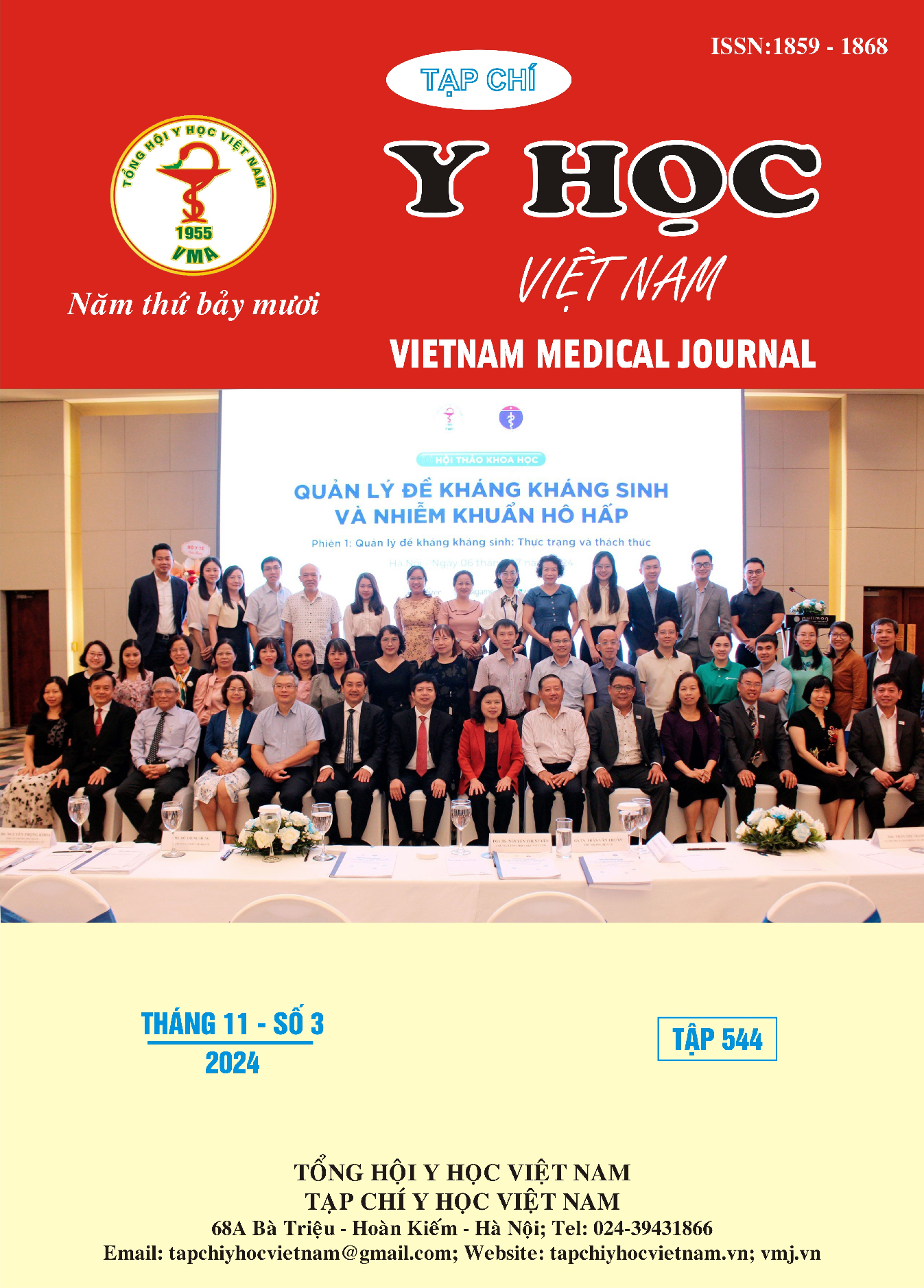CLINICAL, PARACLINICAL CHARACTERISTICS AND TREATMENT RESULTS OF PATIENTS WITH SEVERE ACUTE PANCREASITIS AT NGHE AN GENERAL FRENDSHIP HOSPITAL
Main Article Content
Abstract
Objective: Describe the clinical and paraclinical characteristics and treatment resultsof of patients with severe acute pancreatitis at the Intensive Care Department of Nghe An Frendship General Hospital. Subjects and methods: Retrospective descriptive study analyzed 31 patients diagnosed with: Severe acute pancreatitis according to Alanta 2012 criteria, hospitalized and treated at the Intensive Care Department of Nghe An Frendship General Hospital from january to august 2023. Results: The average age of the study group was 48 ± 13.36 years old. Clinical: abdominal pain: 100%; vomiting: 90.3%; increased abdominal pressure: 83.9%. Paraclinical: Amylase increased ≥240 mmol/l, accounting for 77.4%; Blood triglycerides increased ≥ 11 mmol/l, accounting for 51.6%. CTSI score: 0 - 3 points: 29%; 4 – 6 points: 51.6%; 7 – 10 points: 19.4%. APACHE II score in survival group: 10 ± 5.3; death group: 20.4 ± 6.2; p < 0.01. Alcohol causes: 29%; increased triglycerides: 77.4%; Gallstones: 6.5%. Treatment: 100% optimal fluid replacement, antibiotic use: 80.1%, abdominal fluid drainage: 58.1%, Continuous Renal Replacement Therapy: 38.1%. Treatment results: cured: 83.8%, death: 16.2%. Conclusions: The most common symptoms of severe acute pancreatitis are abdominal pain and increased blood amylase. Abdominal computed tomography and APACHE II score are valuable in diagnosis, treatment, and prognosis of inflammation severe acute pancreatitis. Treatment is multimodal, combining many measures: optimizing fluid replacement, antibiotics, dialysis...
Article Details
Keywords
Viêm tụy cấp mức độ nặng.
References
2. Sekimoto M., Takada T., Kawarada Y., et al. (2006). JPN Guidelines for the management of acute pancreatitis: epidemiology, etiology, natural history, and outcome predictors in acute pancreatitis. J Hepatobiliary Pancreat Surg, 13(1), 10–24.
3. Werge M., Novovic S., Schmidt P.N., et al. (2016). Infection increases mortality in necrotizing pancreatitis: A systematic review and meta-analysis. Pancreatol Off J Int Assoc Pancreatol IAP Al, 16(5), 698–707.
4. Banks P.A., Bollen T.L., Dervenis C., et al. (2013). Classification of acute pancreatitis--2012: revision of the Atlanta classification and definitions by international consensus. Gut, 62(1), 102–111.
5. Phạm Ngọc Trưởng (2020). Đánh Giá Hiệu Quả Của Phương Pháp Giảm Đau PCA Với Fentanyl Cho Bệnh Nhân Viêm Tụy Cấp. Luận Văn Thạc Sĩ Học Đại Học Hà Nội.
6. Nguyễn Tú Anh (2019). Nghiên Cứu Áp Dụng USCOM Trong Hướng Dẫn Bồi Phụ Thể Tích Tuần Hoàn ở Bệnh Nhân Viêm Tụy Cấp. Luận Văn Thạc Sĩ Học Đại Học Hà Nội.
7. Trần Phương (2017). Nhận xét đặc điểm lâm sàng, cận lâm sàng và kết quả điều trị VTC do tăng TG ở phụ nữ có thai. Luận Văn Thạc Sĩ Học Đại Học Hà Nội.
8. Trần Thanh Phong (2019). Nghiên cứu đặc điểm lâm sàng, cận lâm sàng, một số yếu tố liên quan đến mức độ nặng và đánh giákết quả điều trị viêm tụy cấp do tăng Triglycerid tại Bệnh viện đa khoa Trung Ương Cần Thơ năm 2018-2019. Luận Văn Bác Sĩ Chuyên Khoa Cấp II Đại Học Dược Cần Thơ.
9. Vũ Công Thăng N.T.V.H. (2011). Tiên lượng viêm tụy cấp theo bảng điểm Imrie và Balthazar. Tạp Chí Học Lâm Sàng, (61), 40–46.
10. Nguyễn Quang Ân (2013). Nghiên cứu áp dụng bảng điểm BISAP trong đánh giá mức độ nặng của bệnh nhân Viêm tụy cấp. Luận Văn Thạc Sĩ Y Học Đại Học Hà Nội.


